Principle #2: Ice is the dominant feature of the Polar Regions
2A: Ice is dynamic and comes in many shapes and sizes—big, small, floating in water or layered on land, thin or thick, solid or porous soft.
- 2A-1: Land ice forms include ice caps, glaciers and ice sheets made from compacted snow (freshwater). Ice sheets that extend over the ocean are called ice shelves.
- 2A-2: Glaciers and ice shelves can break off (calve) into chunks that fall into the ocean as icebergs and cause sea level to rise.
- 2A-3: Icebergs are made of freshwater and float in the ocean. Icebergs move with winds and ocean currents.
- 2A-4: Sea ice forms when ocean water freezes. The resulting ice is made from mostly fresh water because the salt precipitates out during the freezing process.
2B: Ice shapes the Polar landscape.
- 2B-1: Tundra is a treeless area with permanently frozen soil (permafrost) and low growing vegetation.
- 2B-2: Ice sheets and continental glaciers (land ice) are not static. Due to gravity, they flow downhill at varying rates of speed. Moving ice can move rocks and erode soil in its path.
- 2B-3: Areas of land ice larger than 50km2 are found only on Greenland and Antarctica. The Antarctic ice sheets are the largest on Earth, containing 90% of the world’s ice, while the Greenland ice sheet contains 10%.
- 2B-4: It is estimated that all the world’s ice caps, glaciers and permanent snow contain 68.7% of the freshwater available on Earth. Freshwater is only 1.74% of the total amount of water on Earth. “Unlocking” freshwater from ice caps and glaciers will have ripple effects on the global ecosystem.
2C: Sea ice naturally shrinks and expands with the seasons. However, this natural dynamic cycle is affected by increasing air and ocean water temperatures occurring at the Poles due to climate change.
Scientist Spotlight
Related Resources
- Polar Data Stories – Interactive online actives featuring cool Polar research and data.
- I.D. Antarctica – Photographic mysteries of Antarctic animals for students to investigate.
- Project Swarm – A curriculum of lessons and data activities for middle and high school students featuring the influences of warming on the food web interactions between phytoplankton, krill and penguins


